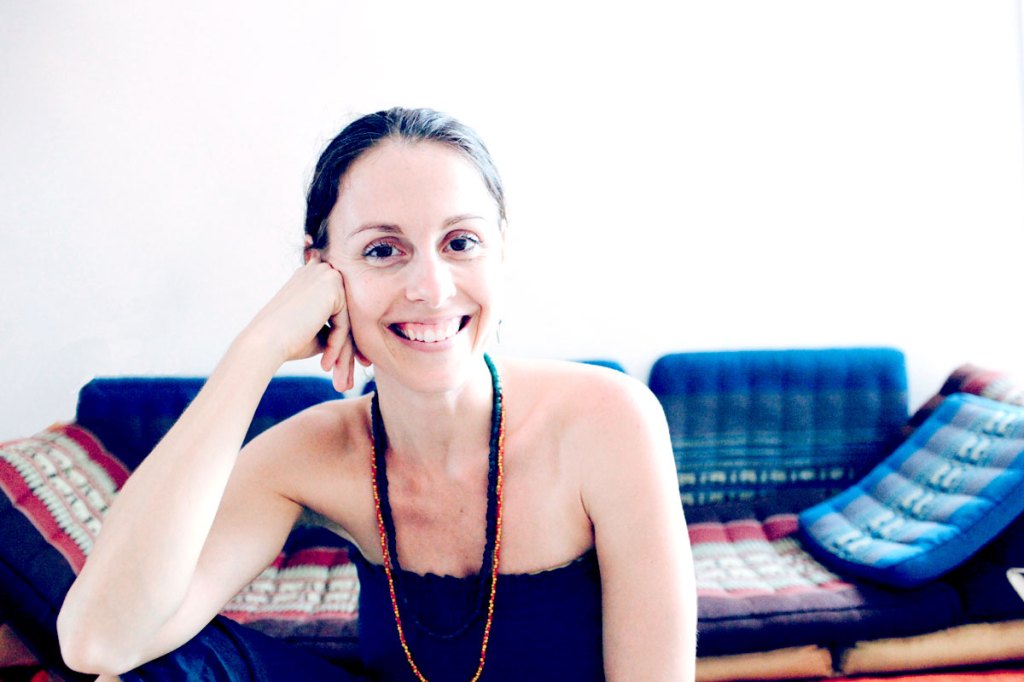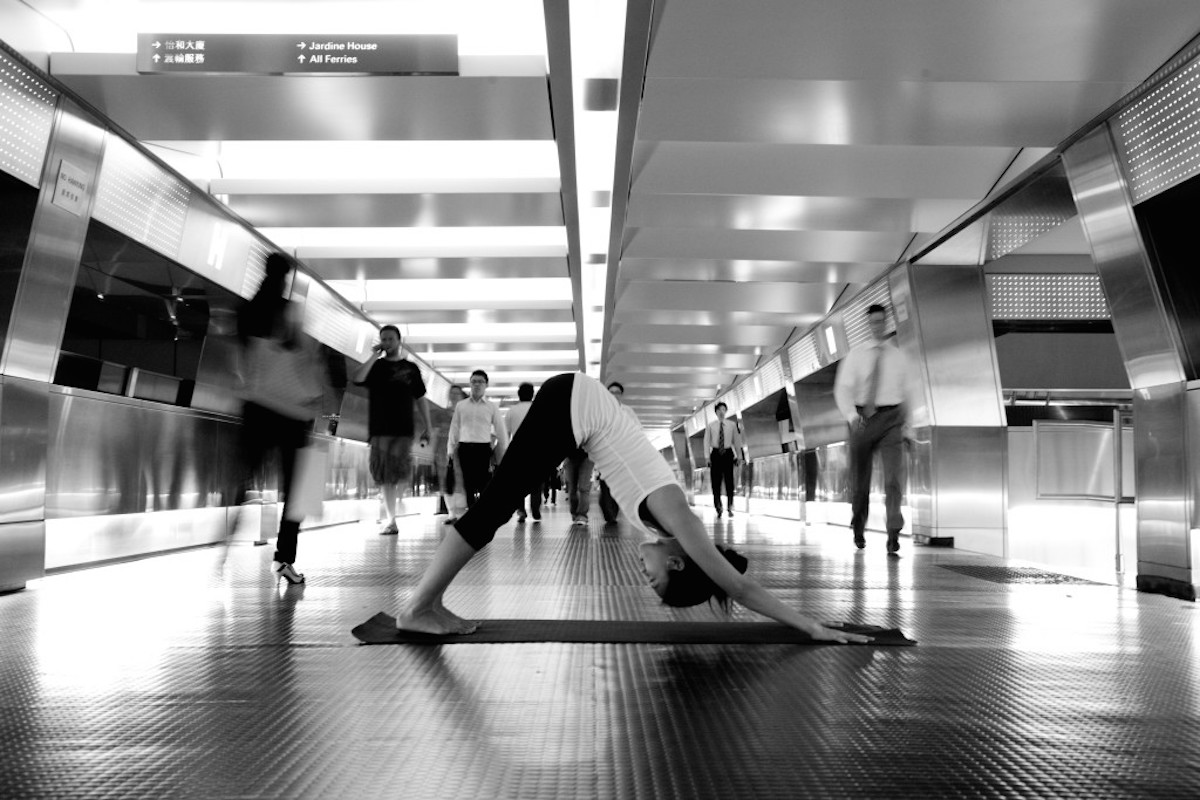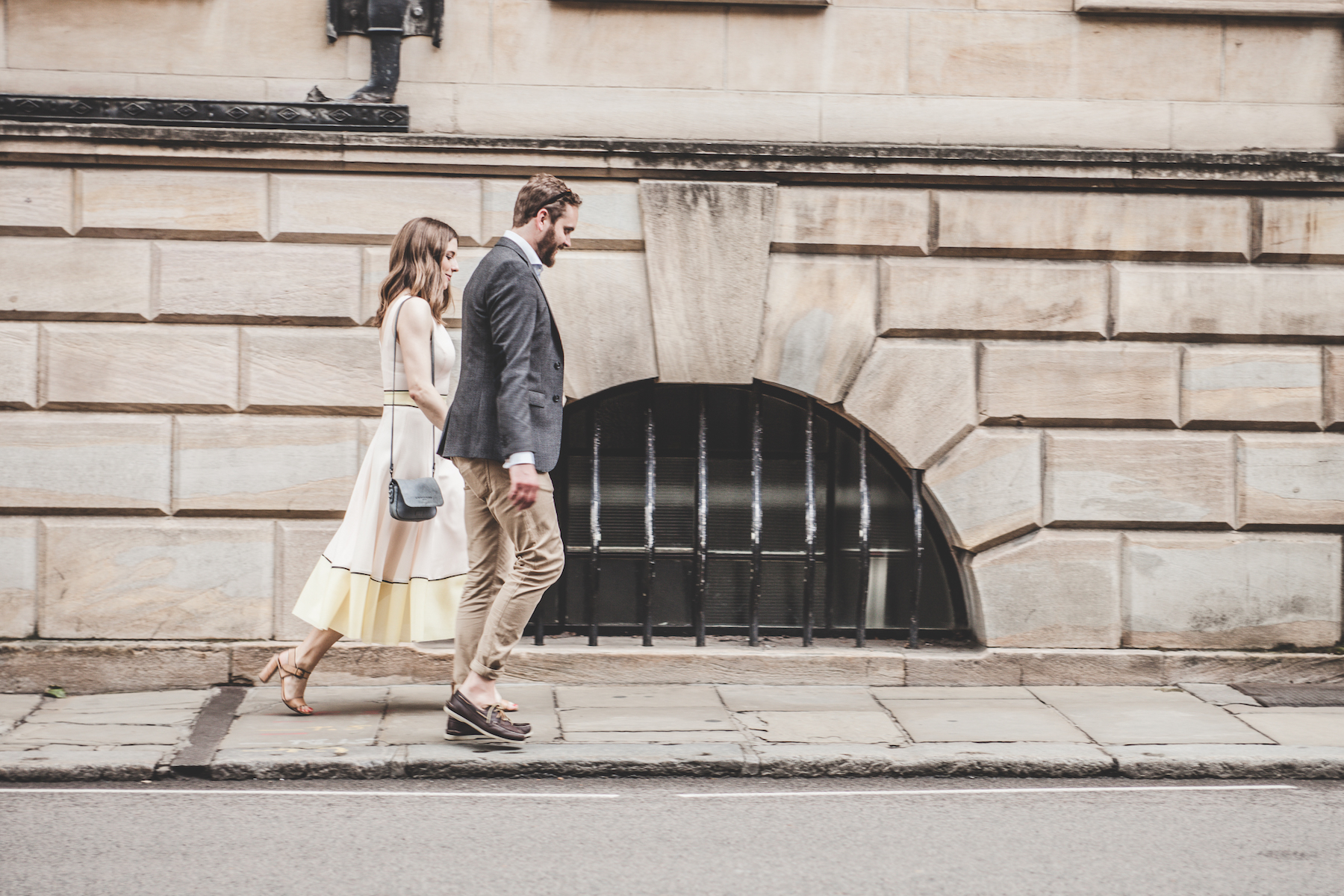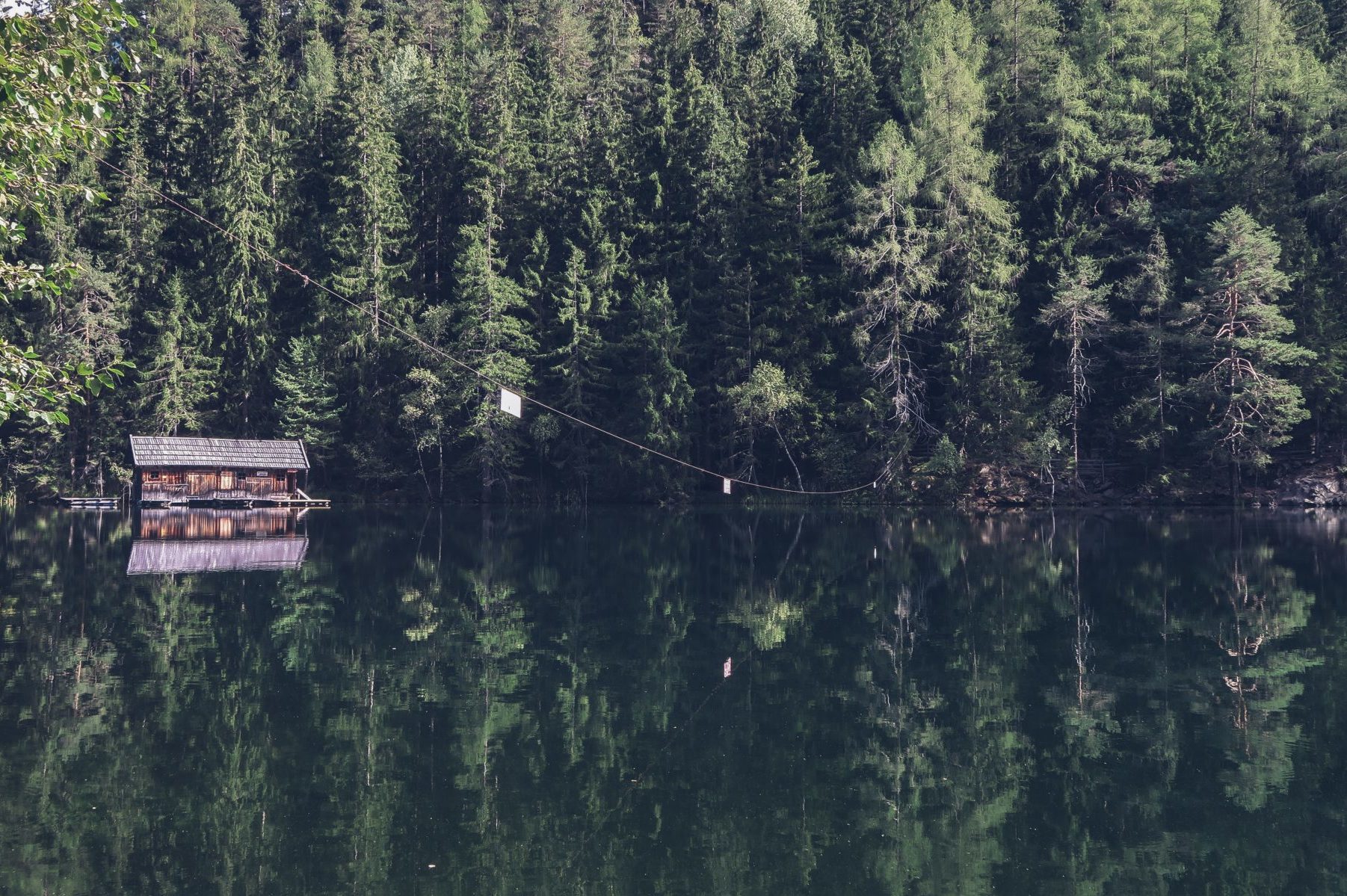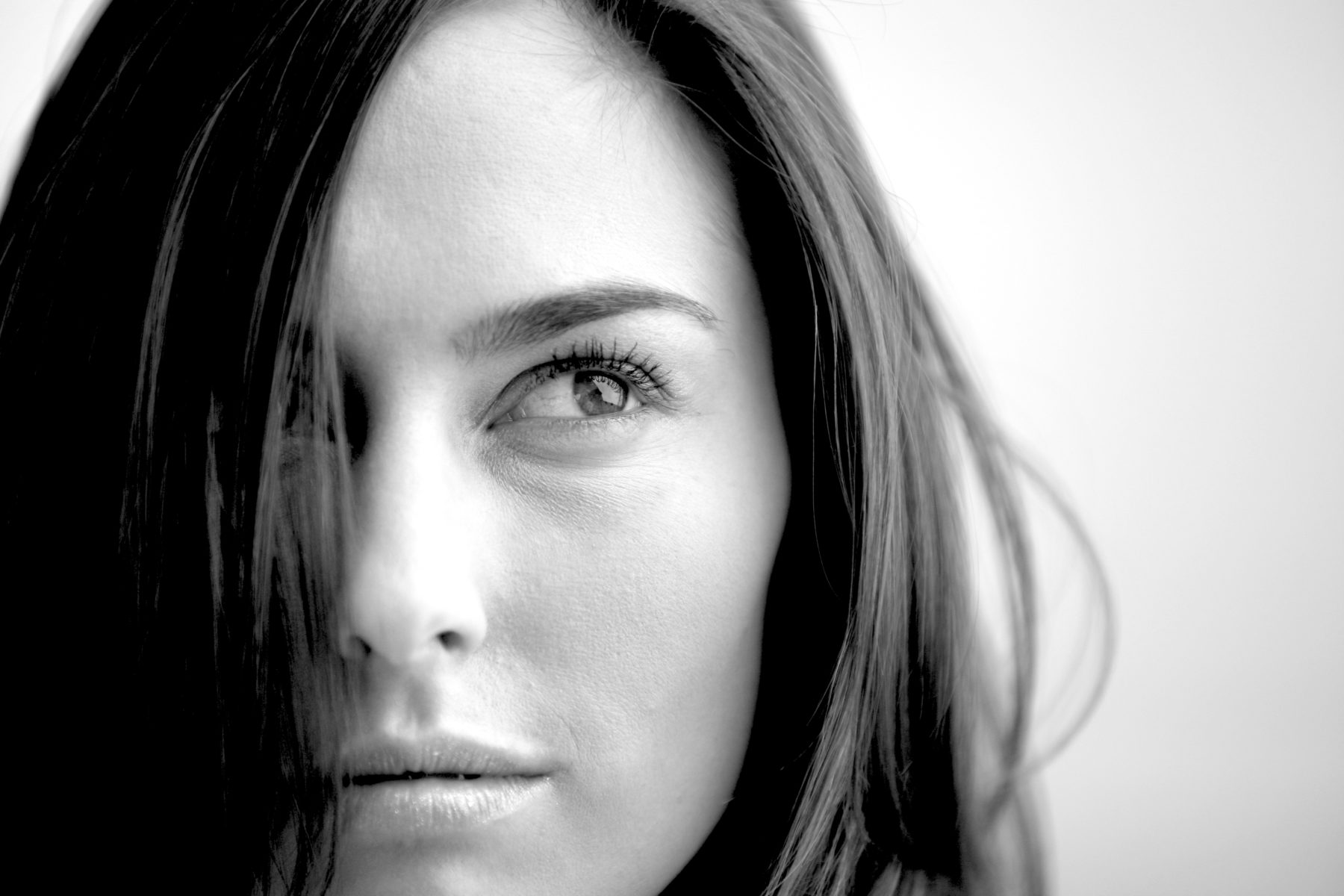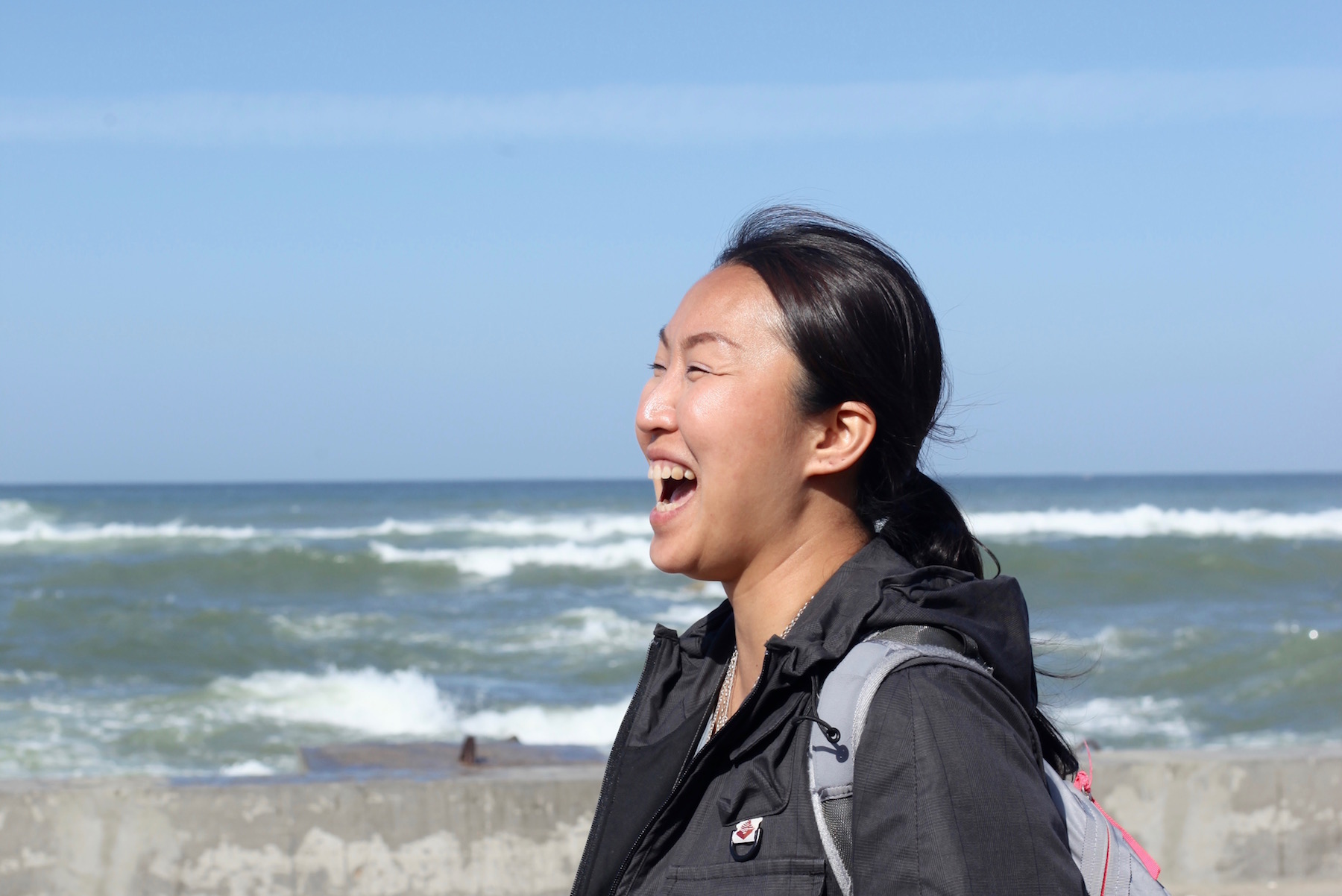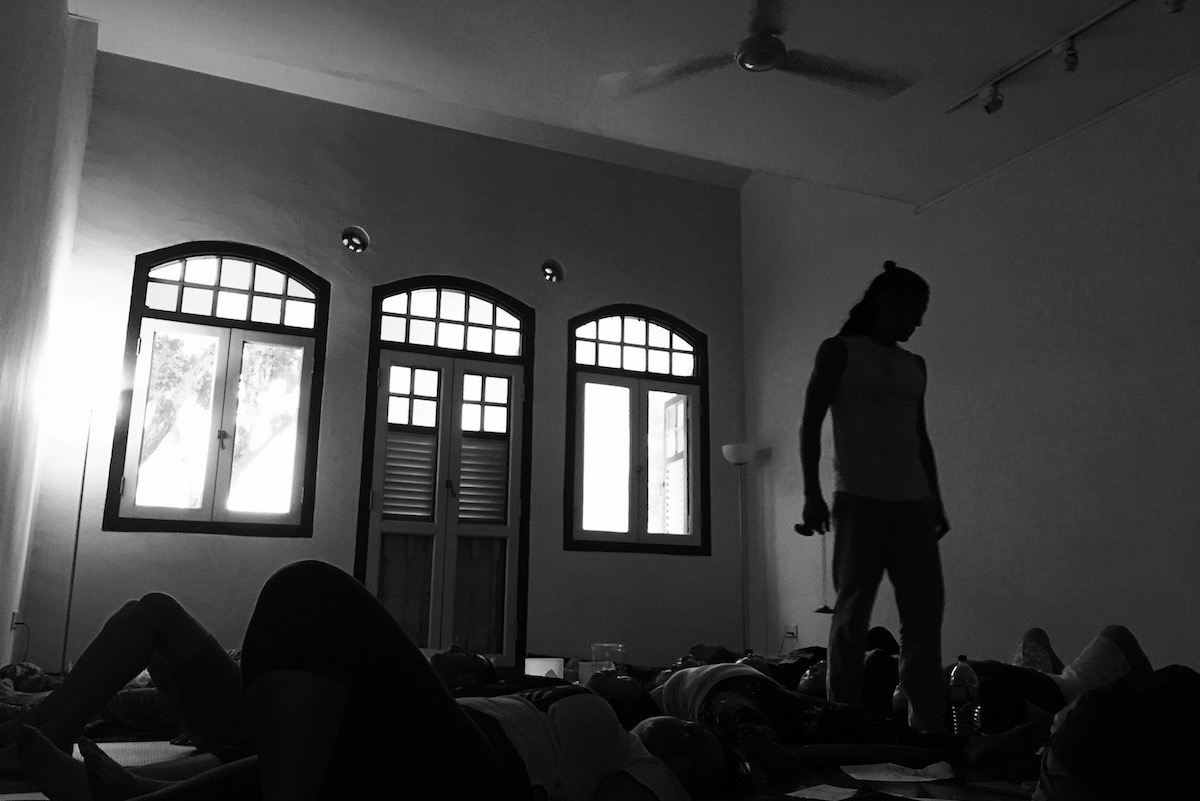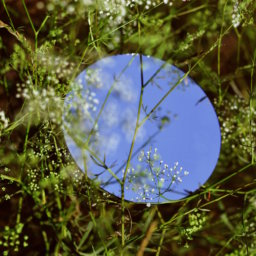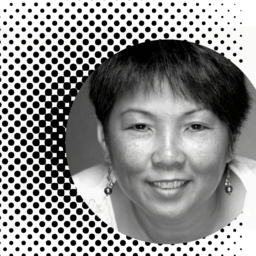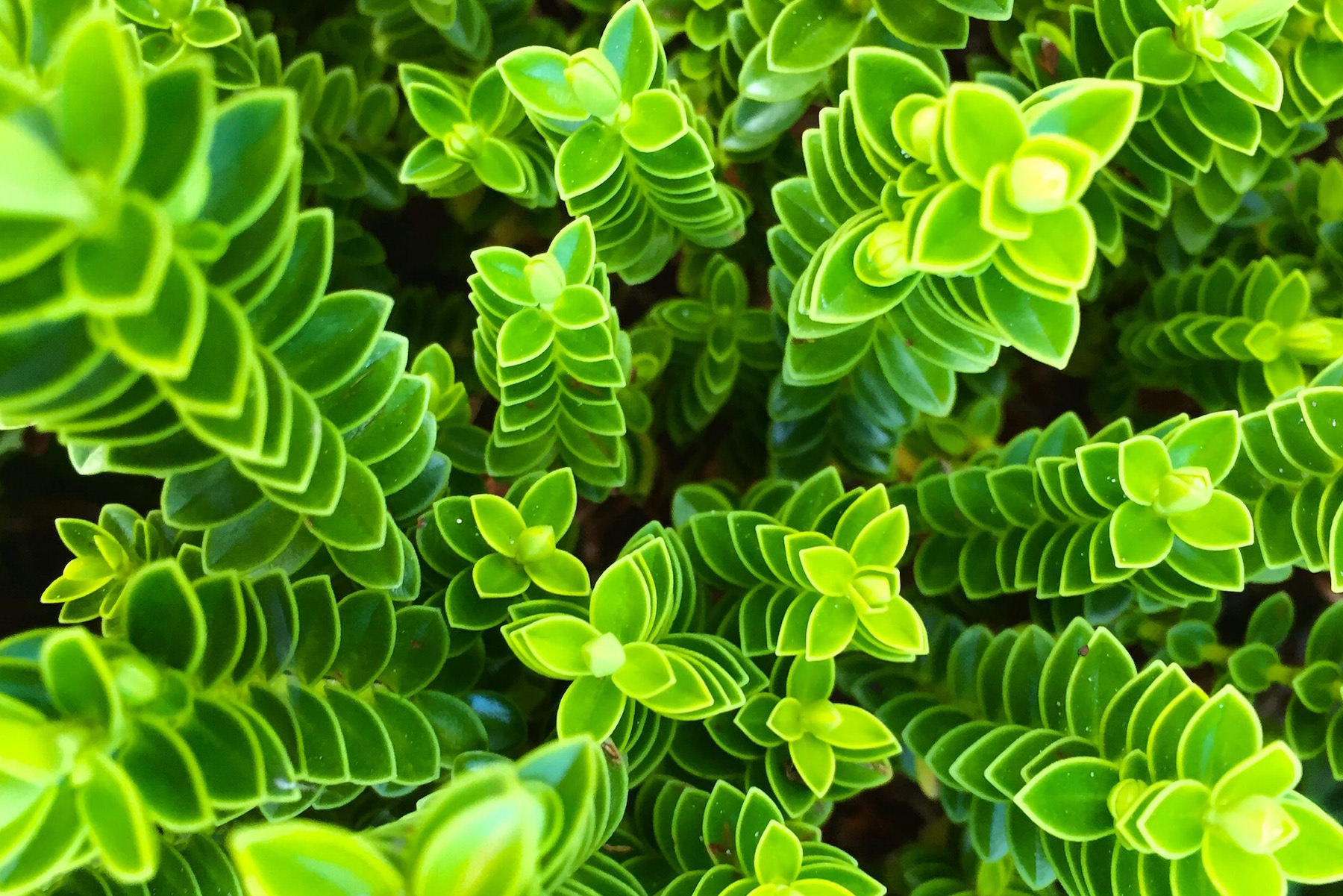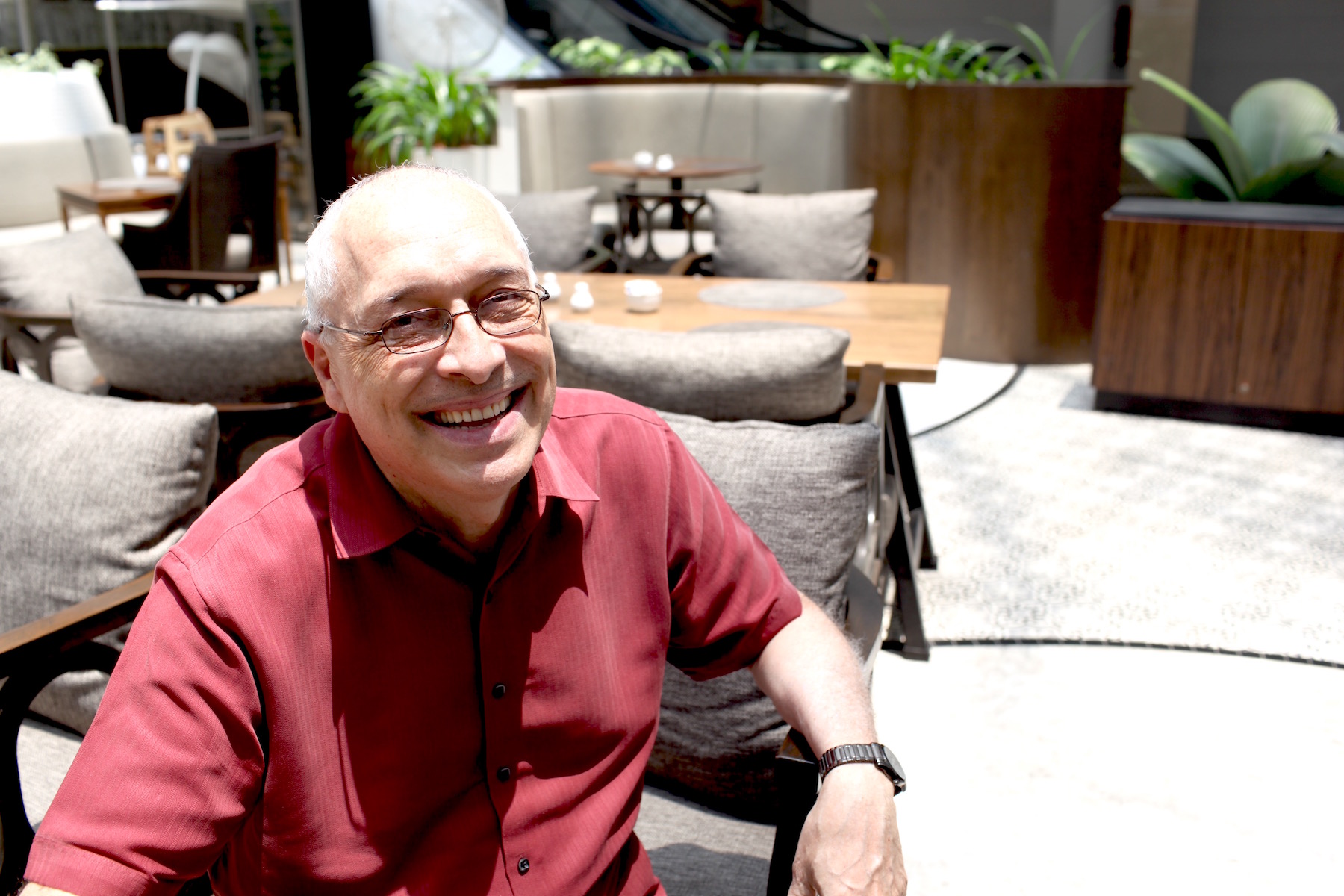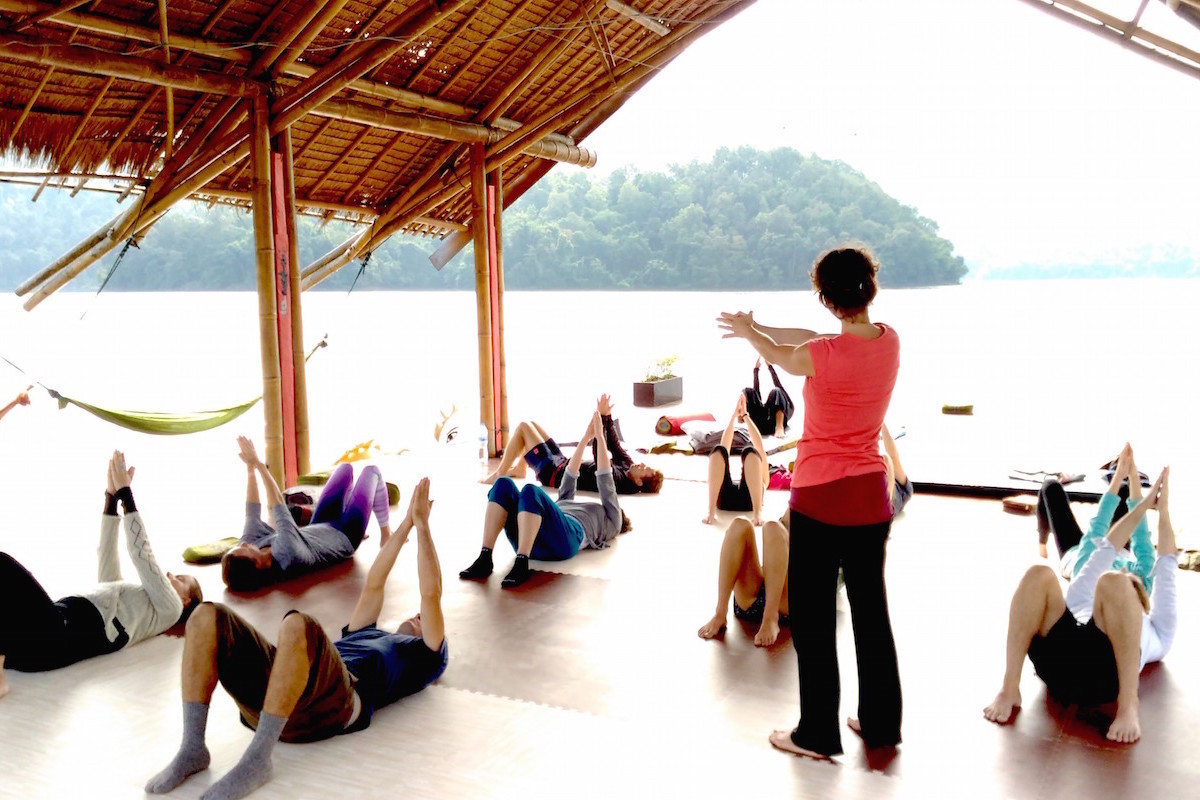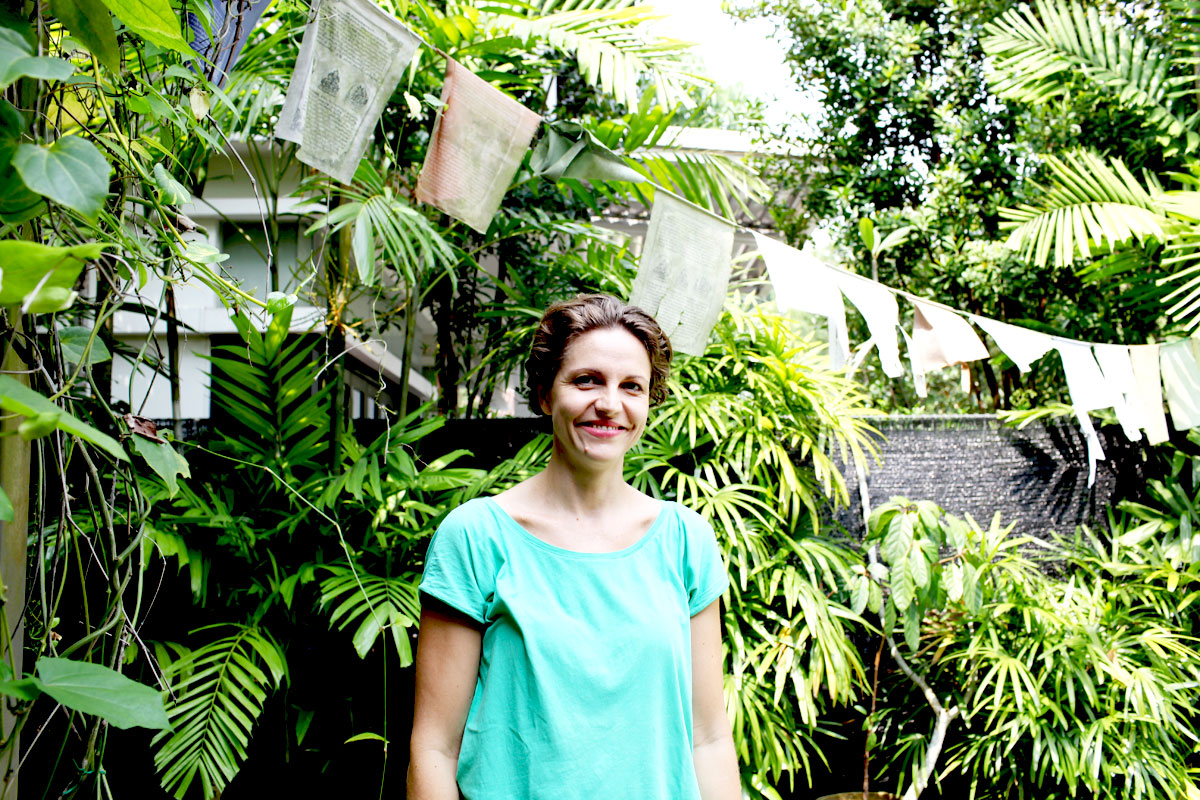FF
Amber Sawyer, like so many, has made Singapore home, and like so many, Amber made a stunning but not surprising change in her career and lifestyle. She is the woman behind Satsanga, a community that is a sanctuary and a gathering place for those seeking a more spiritual and heart-centred way of living. We sat down with Amber for a stroll down memory lane, and off many different tangents. (This is a 2-part series)

Q
You come from the sciences?
A
Yes, I double-majored in math and chemistry, and then in grad school, I completed a Masters and PhD in Biomedical Engineering.
Q
When did holistic health come into your mind?
A
The seed was planted to do something else, with holistic health or wellness, around 1999/2000. Because of some outside pressure, though, I continued with the Sciences.
While in grad school, I became intrigued by Ayurveda, and then I started practicing yoga as well. In 1999, when I attended a yoga class, I fell in love, because, wow, yoga combines everything that I was interested in – the body, elements of gymnastics, mindfulness and awareness, and esoteric spirituality. At the time I was trying out yoga, I was cycling competitively. That sport, plus my PhD pursuit, was too much competition, and so I wanted to do something more balancing. With yoga, I found it a huge stress relief and a non-competitiveness that I needed. Then, throughout grad school I always went to my yoga practice as a refuge to find peace, to clear my mind, and to rebalance myself.
At many points along the way, I questioned why I was in grad school. I kept looking at many things like naturopathy, Ayurveda, and integrative nutrition, and I never could jump. Something in me was always holding back, and in hindsight, I think it was because it was not the right time. Also, at that moment I had a bit of fear, of changing paths and changing direction.
So when I got offered a post-doc in Singapore, I said yes because I wanted to live internationally and thought I could stay in the sciences a little longer. In the middle of that three-year contract, again those strong feelings were coming up that this was not my heart’s path. I started listening to that voice more, and really considering, okay, what would it look like if I completely changed direction and jumped into uncertainty? It took me some time. So in the interim, I started apprenticing with an Ayurvedic practitioner in Singapore.
THE TURNING POINT
Q
What then prompted you to make the change?
A
Basically, life helped me change my direction because some things happened in my post-doc that catalyzed my resignation. I was doing stem-cell research, and I had to work with animals, which is not something that I ever wanted to do. Then there were fraudulent activities in the lab. All in all, I found my ethics were severely challenged, and finally I realized that was a sign to change direction.
Q
Was it easy to make the switch?
A
No! [Amber laughs] It was not as easy as when I think about it now. Like many people, I thought about it and I thought about it. It wasn’t a spontaneous decision. It was scary. It was a really big decision. The moment I resigned, suddenly I faced this question of who am I because I had identified myself as a scientist for so long and created myself that way. And became accustomed to how people viewed me by what I was doing.
Q
When you were growing up, were you praised for being intelligent?
A
Yes. My family members are all intelligent and my mom used to be a nurse. They are all very intelligent and logical. And I was always praised for my academic performance, and that was reinforced lovingly, but I started to build my identity around that. Then suddenly when I wasn’t a scientist anymore, and people asked what do I do, I would have to say I don’t know. I practice yoga. I meditate. Their responses were much different than when I was a scientist. No more wow factor.
When that label was dropped from my life, though, I suddenly realized how much I had identified my own self-worth according to that label as a scientist.
Q
Why do you think that is?
I think modern societies have learned, for some reason, to value the sciences above the arts. I think as a society we put higher value on the analytical side of things, unfortunately, in the name of progress. Yes, sciences are good, but the arts are beautiful, so creative, and a way to make life colourful.
A
I think modern societies have learned, for some reason, to value the sciences above the arts. I think as a society we put higher value on the analytical side of things, unfortunately, in the name of progress. Yes, sciences are good, but the arts are beautiful, so creative, and a way to make life colourful.
Q
Which is interesting because Einstein, and other scientists, talk about their process and making discoveries as very creative and intuitive, and even spiritual.
A
Yes, true and so many scientists are just amazing musicians or painters or dancers. Science is full of creativity. However the direction that academic science has taken in the last several decades severely stifles creativity. When that label was dropped from my life, though, I suddenly realized how much I had identified my own self-worth according to that label as a scientist. That was a beautiful place of uncertainty and doubt.
Q
Did it feel beautiful at the time?
A
No. At the time it didn’t. At the time it was really challenging. I suddenly didn’t know how to value myself. Plus I was married at the time and I felt that I had hurt our family because I wasn’t making the same amount of money and contributing as I had before and I felt pressure in that way, not from him, but from myself. It was a raw time. It was time when I had to do some searching. And so I went to India for two months to deepen my yoga practice and I meditated for long hours. That was another turning point.
Q
Is that when you completely committed to going into yoga?
A
I was already committed. Yoga has been in my heart for such a long time. It was more that I didn’t know what was my next direction and I related to yoga as a means to gain clarity. I actually didn’t see it as I wanted to teach yoga or meditation. That was the last thing in my mind; I thought, if anything, I would study Ayurveda. That was part of my reason for going to India – I wanted to find teachers. But that wasn’t what life had in plan for then. Not at that moment, anyway.
THE SEARCH
Q
What turned up for you in India?
A
It was wonderful. I was really laughing and dancing and suddenly my mind was clear.
I went to many different ashrams when I was there, practicing yoga and meditating. I found dancing and laughter meditations. At that time, I thought it sounded kind of crazy. I had never heard of anyone dancing and laughing while meditating, so I wanted to try it. I was also pretty depressed at that time, because of resigning my job, not knowing where I was going to go, and even my marriage was having a lot of trouble. I was pretty down, and was looking for any way to pick myself up. I went to these meditations and I had such an amazing experience. It was wonderful. I was really laughing and dancing and suddenly my mind was clear.
Q
How do you laugh and dance and meditate?
A
You are fully present with it. You are so present laughing, you go into no-mind. You are no longer thinking about your past, or your future. And you are so present dancing that only the dance remains and the dancer completely dissolves. [We pause for a few moments as Amber’s partner Daniel makes her a green juice.]
Q
Did you recognize at the time that you were depressed?
A
Yeah but I didn’t realize how serious. When you are in it too deep, you don’t see where you are. A lot of angels appeared in my life who helped me. People I least expected showed up.

Q
When was the first moment you realized you are truly happy?
A
That is such a beautiful question. That year, 2009, is really symbolic. I went to India in January and it was September when Satsanga started. It didn’t have a name at that time. Its existence put me in this role, as a facilitator and organizer, and that period, from January to September, is nine months. When I look back, I feel like I gave birth, to a whole new life and a dharma that is in my heart.
Right around September 2009, I do remember feeling suddenly, wow, I am so supported by life, I am headed in the right direction, and that I could do this. I felt good. I still had a lot of challenges ahead of me and I went through many. I am sure I’ll go through more.
A few years later in 2012 was when I went through a divorce and that was very challenging. All the pieces were in place to support me through that though. Satsanga was in my life. All the tools, modalities, and techniques I had learned were put into full practice. I would say that healing process took around two years, and in 2014, again, I felt okay.
I felt I could do this. I was standing on my own two feet and my heart was full. I reflected that, I love myself. I love my work and I love this community. My life is beautiful and I was deeply grateful. When I can feel that deep gratefulness, that is when I feel very happy. And it was at the start of 2014, just as I came into a very authentic place of self-love, that I met my beloved partner, Daniel, and rose into such a beautiful exchange of love with him.
BIRTH OF SATSANGA
Q
How would you describe this time in your life?
A
The period from when I left my job in November 2008 until when I went to India in January 2009 – that was a transformational period in my life. When I attended the laughing meditation, I met Matreiya, who was facilitating, and little did I know at that time but it would be him who was going to teach me so many of the active meditations that I now facilitate at Satsanga. He essentially planted the seed for the birth of Satsanga. So during that first encounter with him, I ended up staying in south India for two more weeks so I could attend more of his meditations. After I left India, I was so moved by those meditation techniques that I kept sharing with my ex-husband about it. And he was who suggested that we invite Matreiya to Singapore.
Q
Your husband was still supportive at that time.
A
Yeah, it was beautiful he suggested that and was open to the idea. We invited Matreiya and he came August 2009. I gathered some friends and rented a yoga studio and we learned the meditation techniques. Matreiya stayed for one month, and after he left, all of us were so inspired and wanted to continue the meditations but we didn’t know where to practice.
I said, why not here, in this very apartment? Everything started here. It was so strange, but when my ex and I were looking to rent this place, I had a vision of this room being empty of furniture but with lots of people in it.
Q
And that is how this room usually looks like!
A
It’s amazing! So somehow I saw it many many years ago.
After Matreiya’s visit, a few of us would meditate in the back room. No one wanted to facilitate and so I said I would. Really, that was just pressing “play” on the CD player. We met once a week and they started to bring friends and these people brought their friends. I made the night “by donation” so it could help support me while I was trying to figure out what I was going to do for my job, you know. That was on Tuesday nights and then friends started to ask if I could teach yoga. I thought, no, I’m not a teacher and how can I do that but they kept asking and so I said I would share what I was practicing. That’s how Satsanga started. That was six years ago. We’ve hardly missed any Tuesdays since then. Tuesday nights are still “by donation.” It’s been an inspiring journey.

Continue to Part 2 of this interview with Amber
Portraits by What Therapy.


